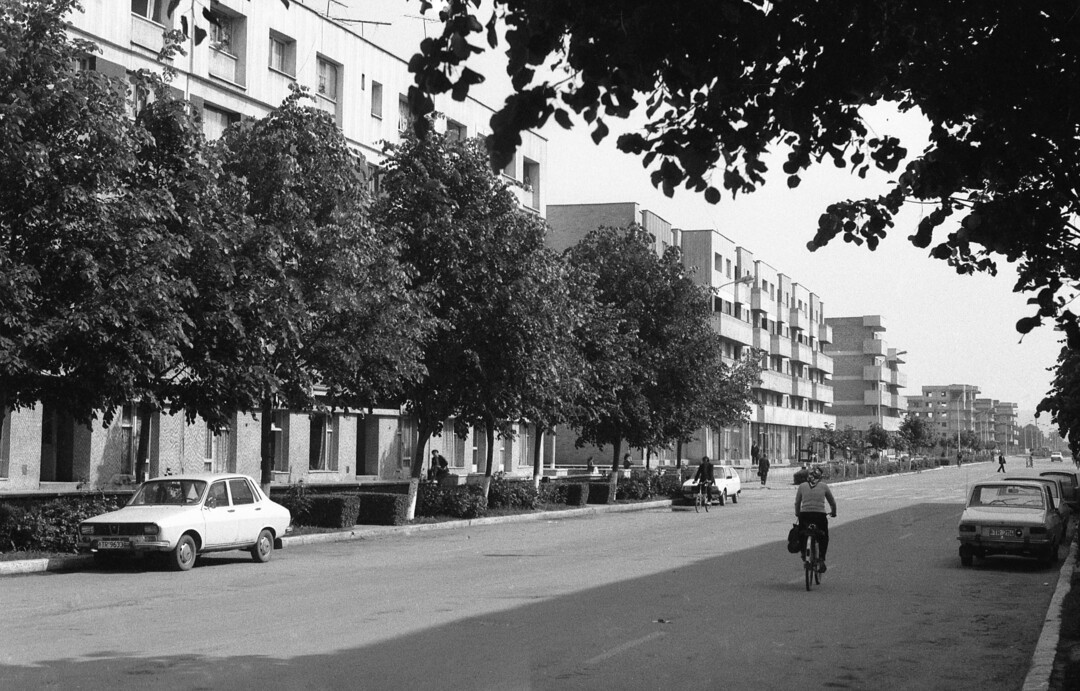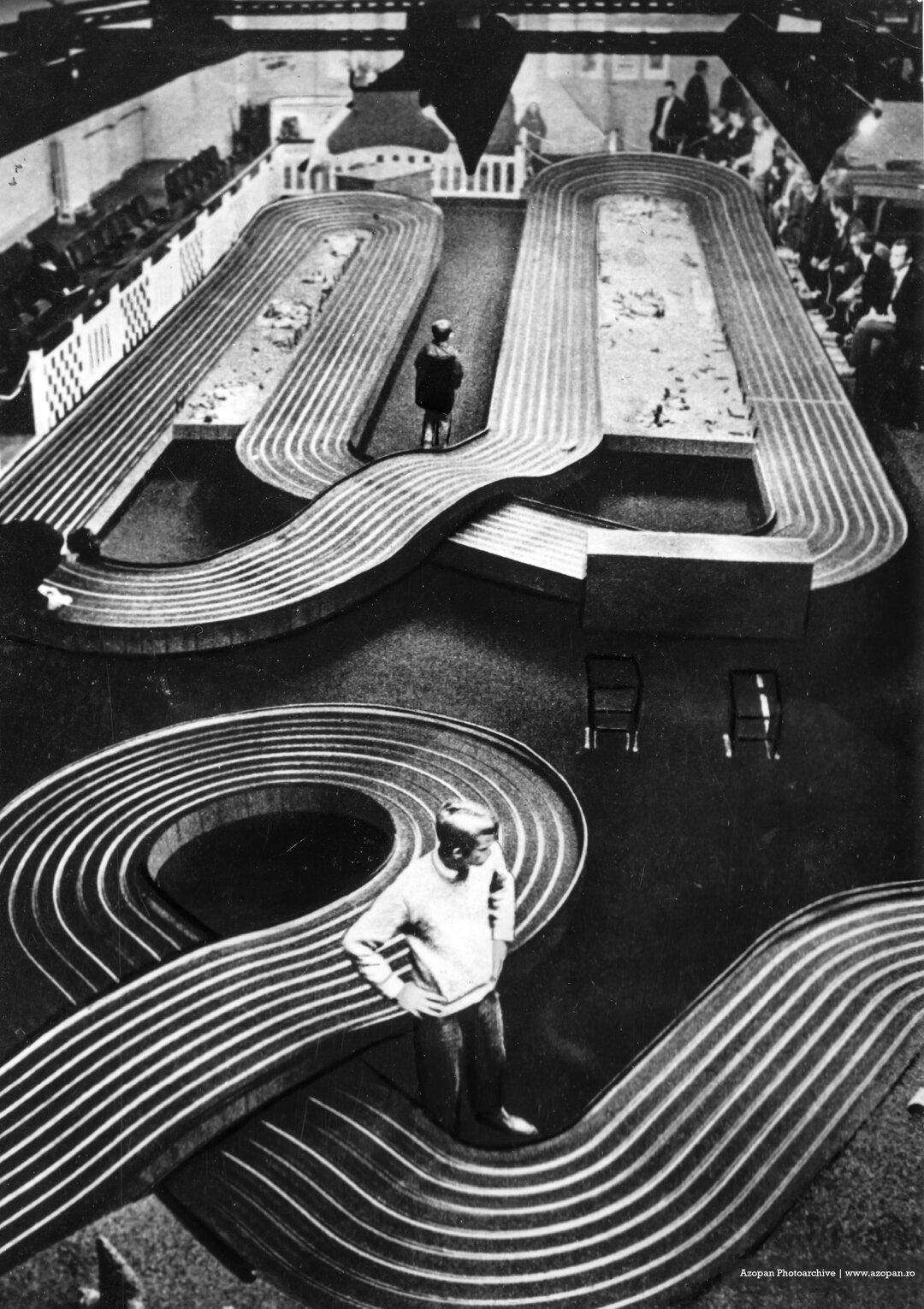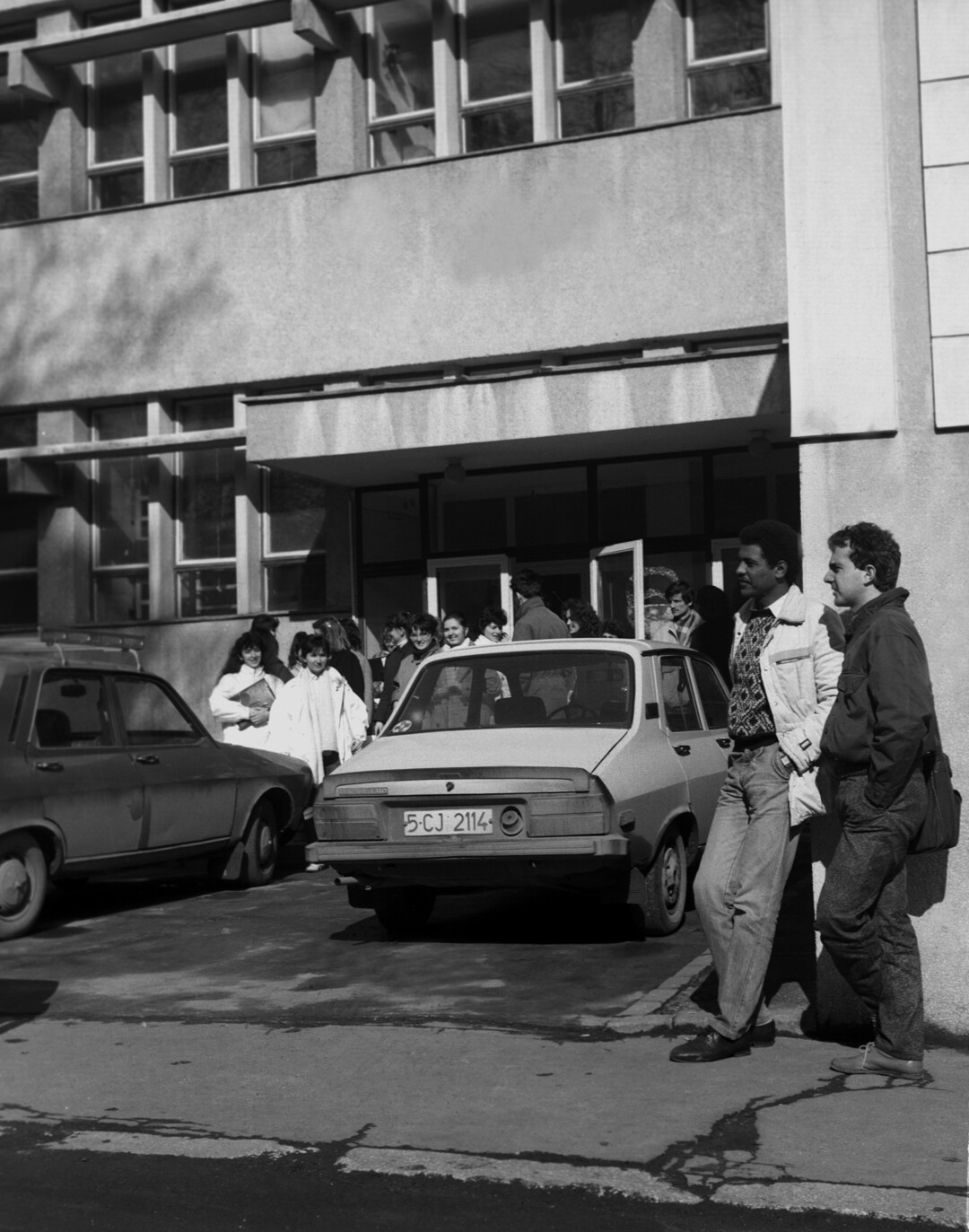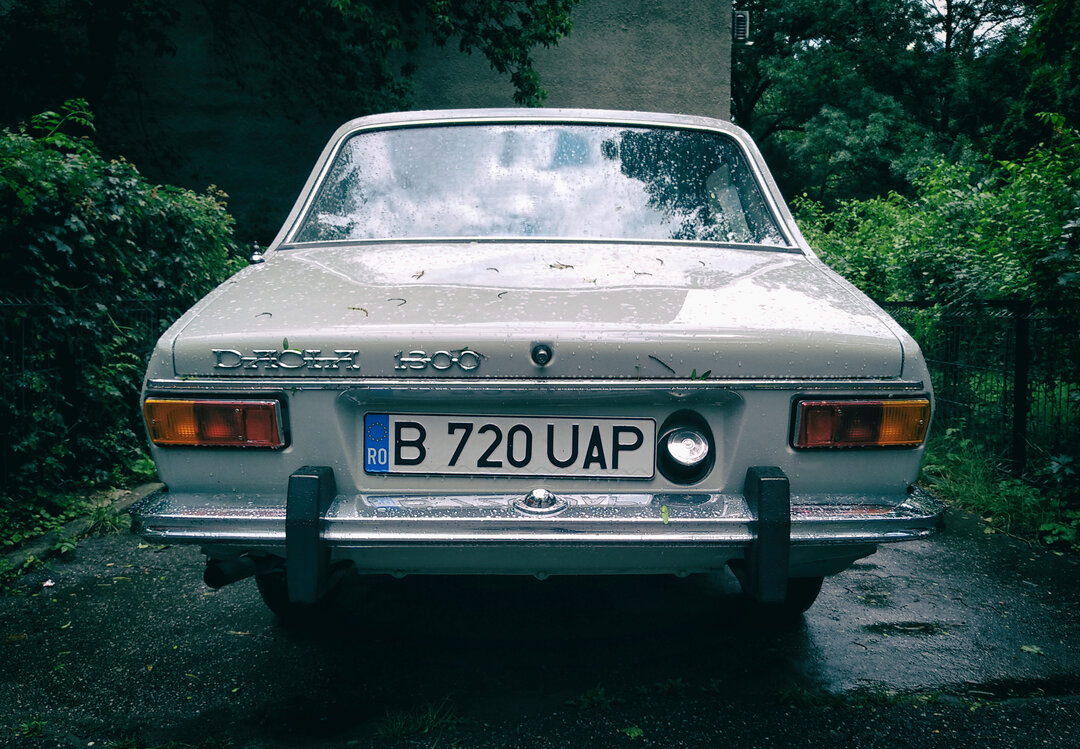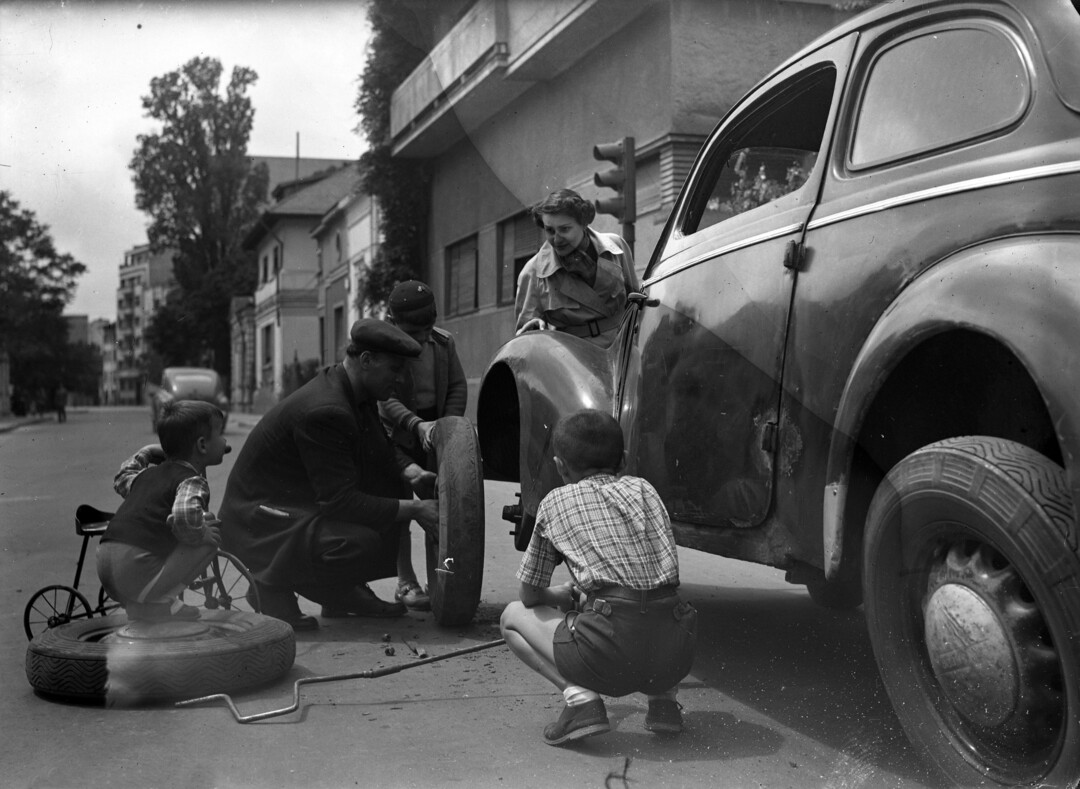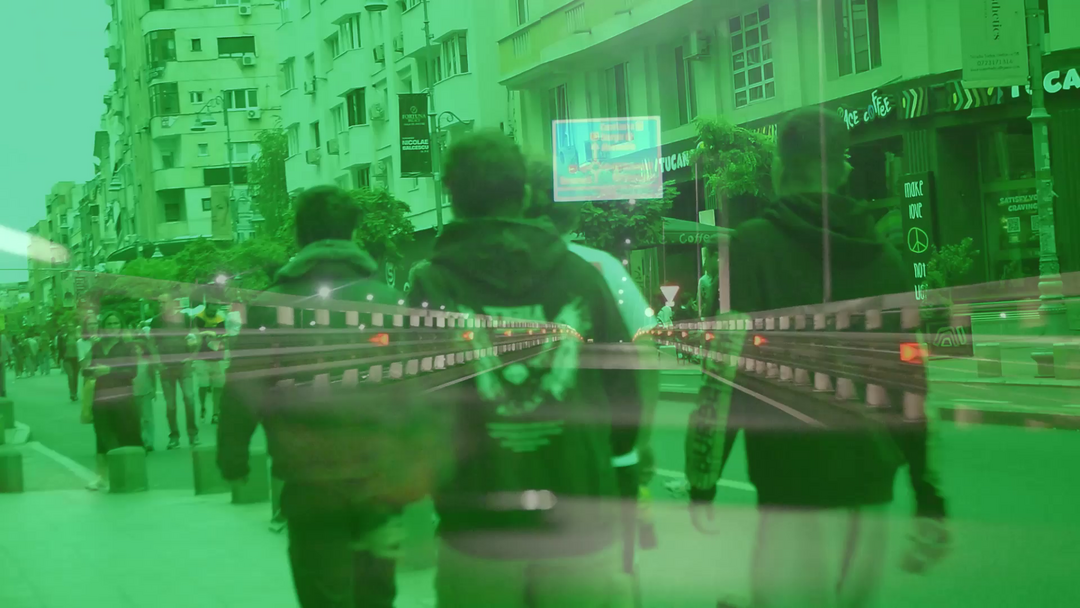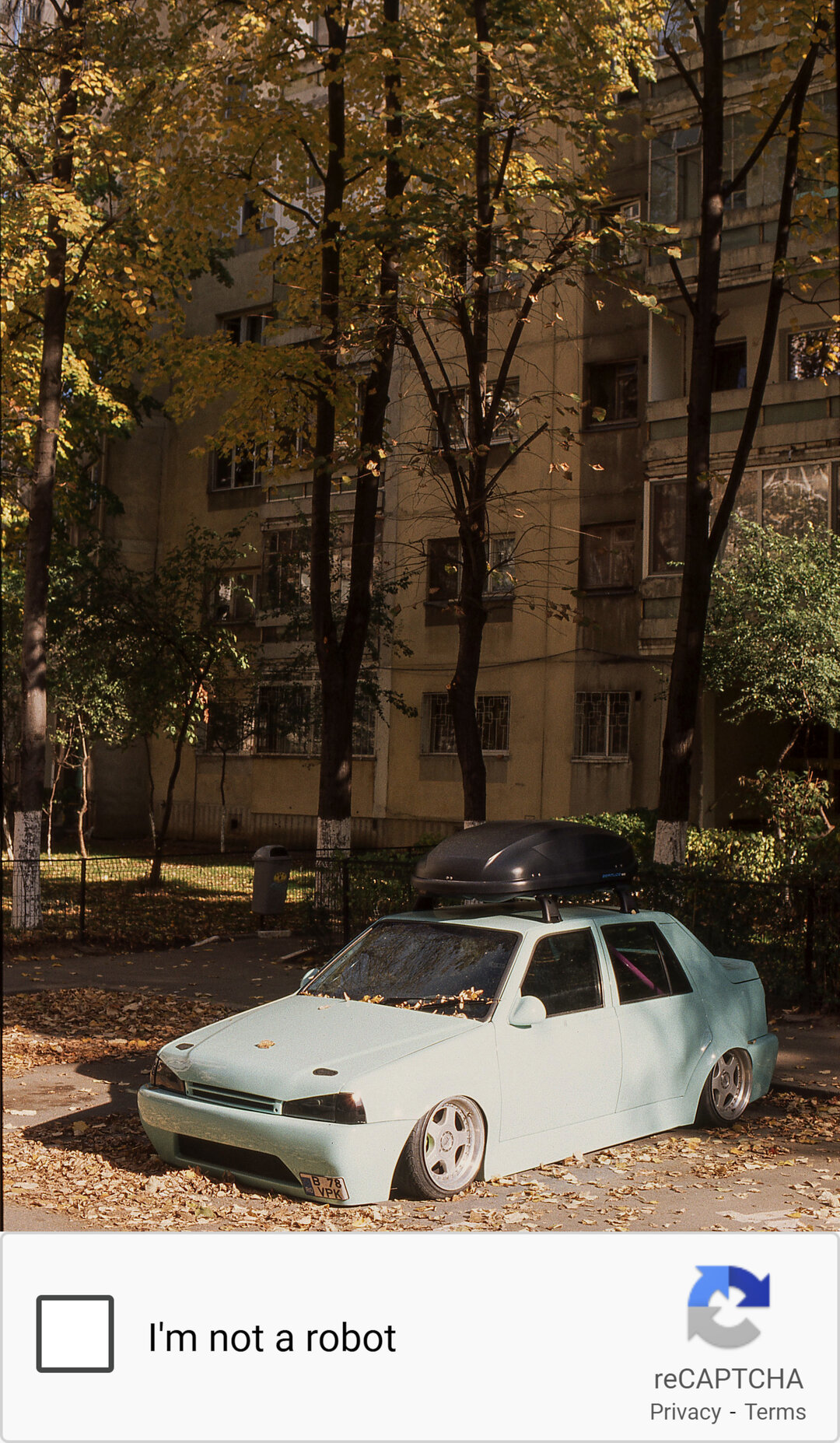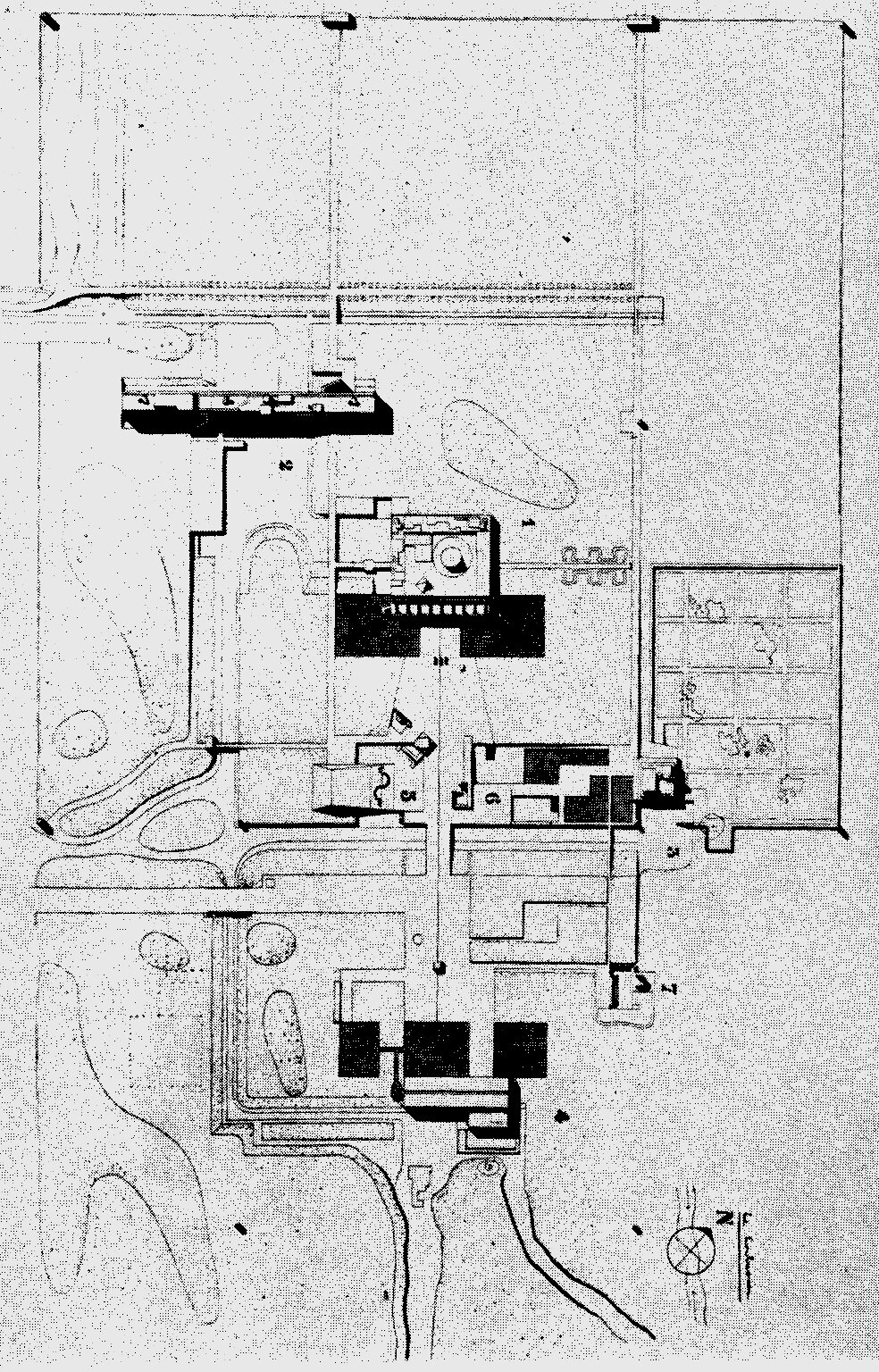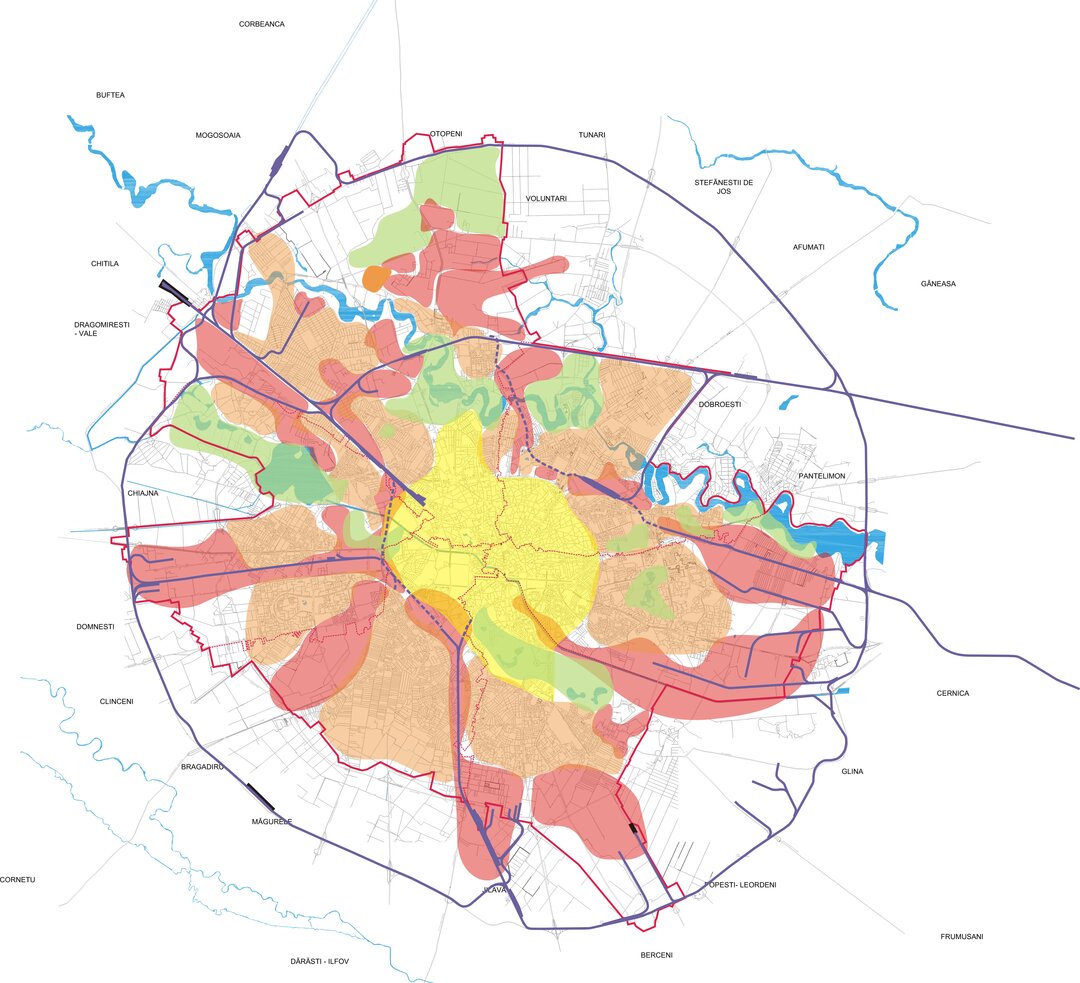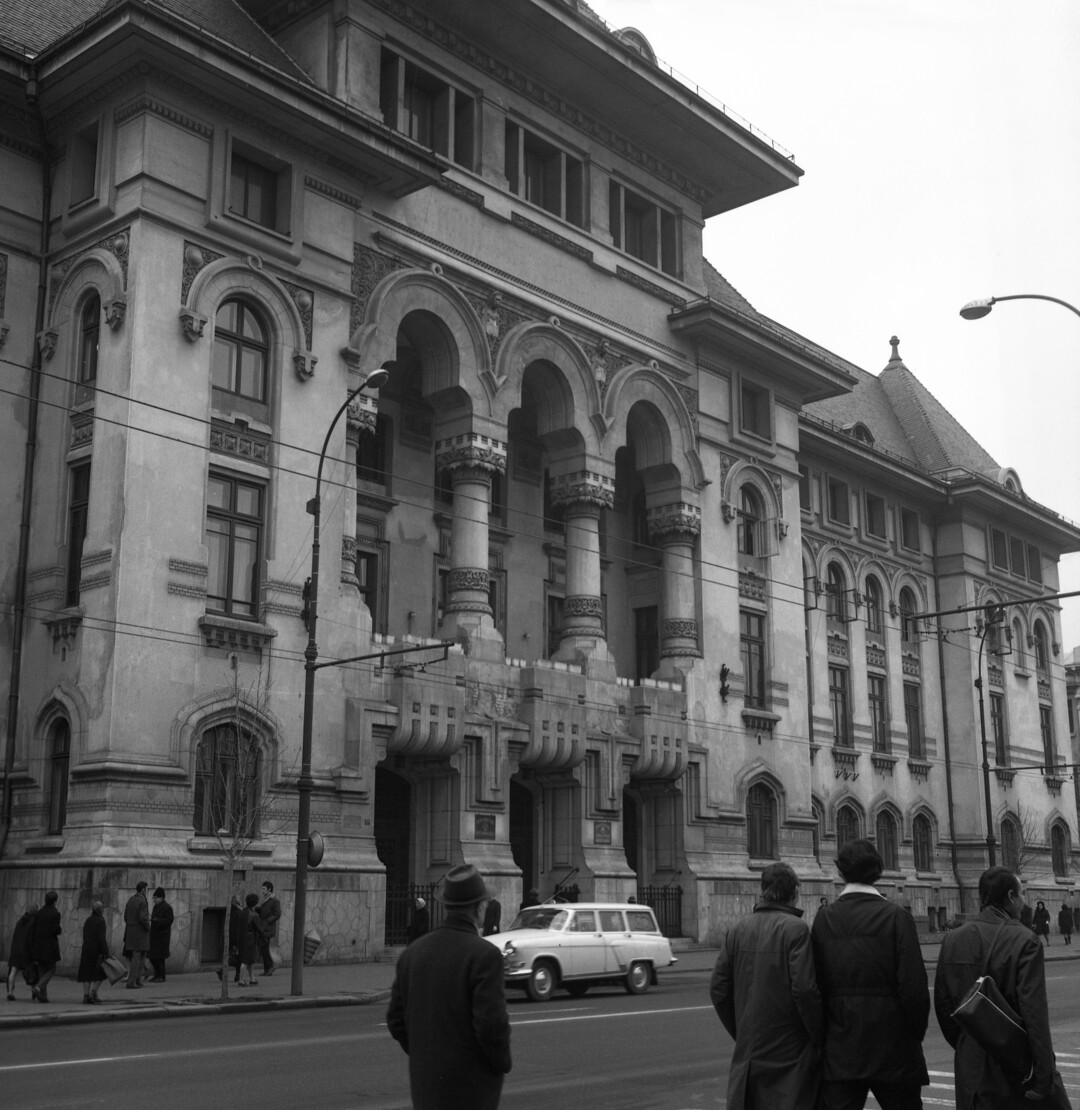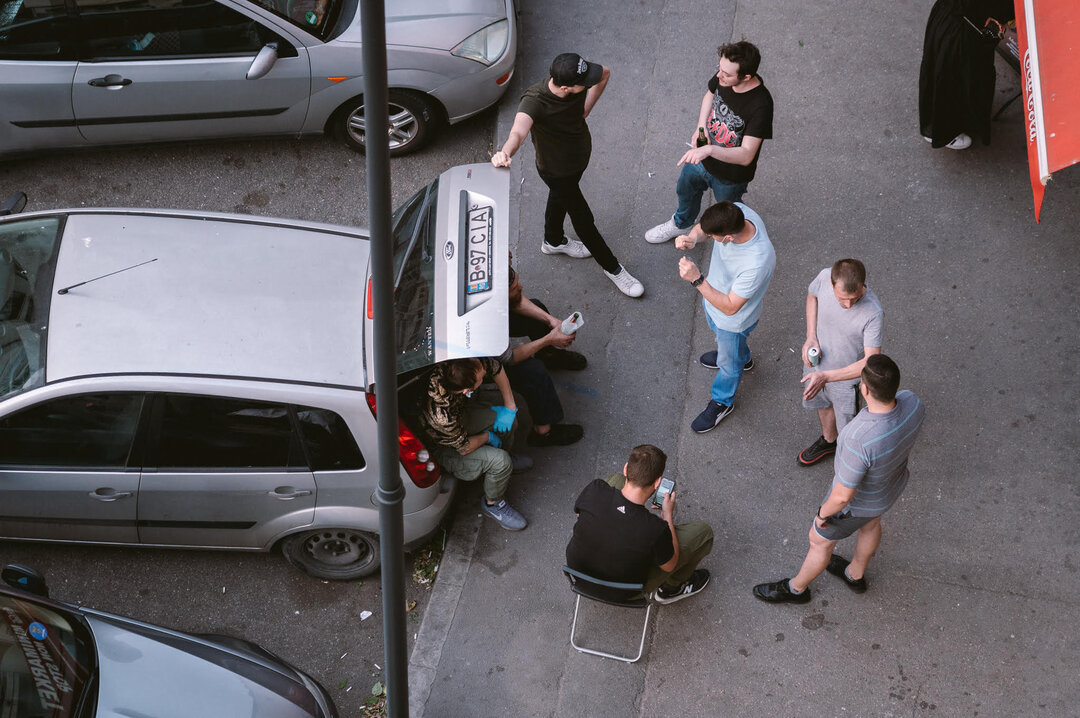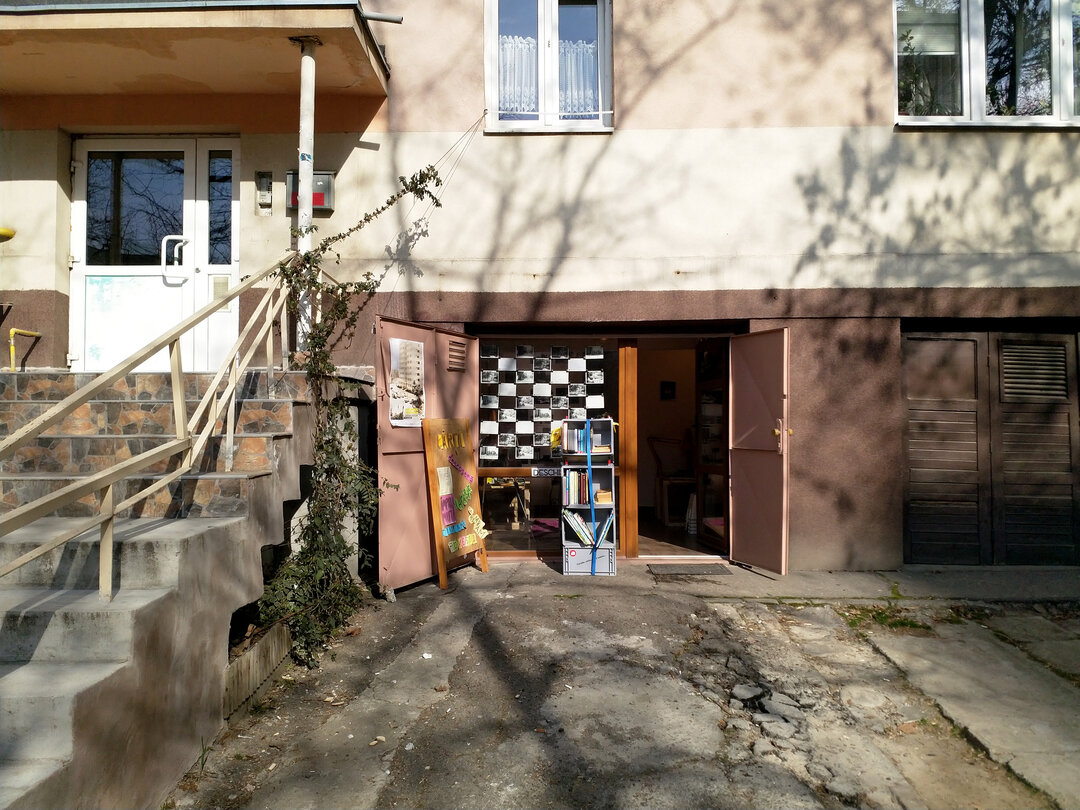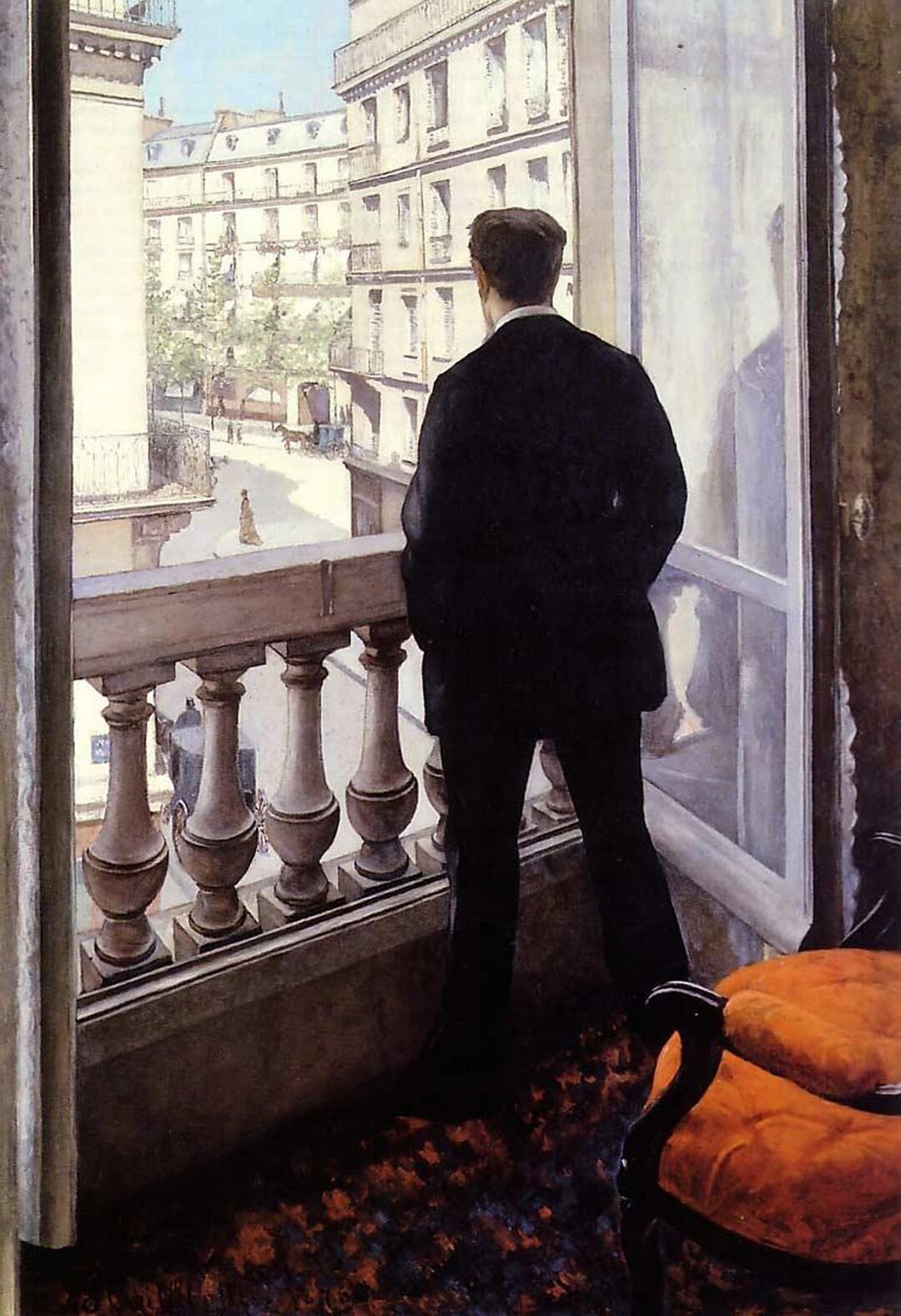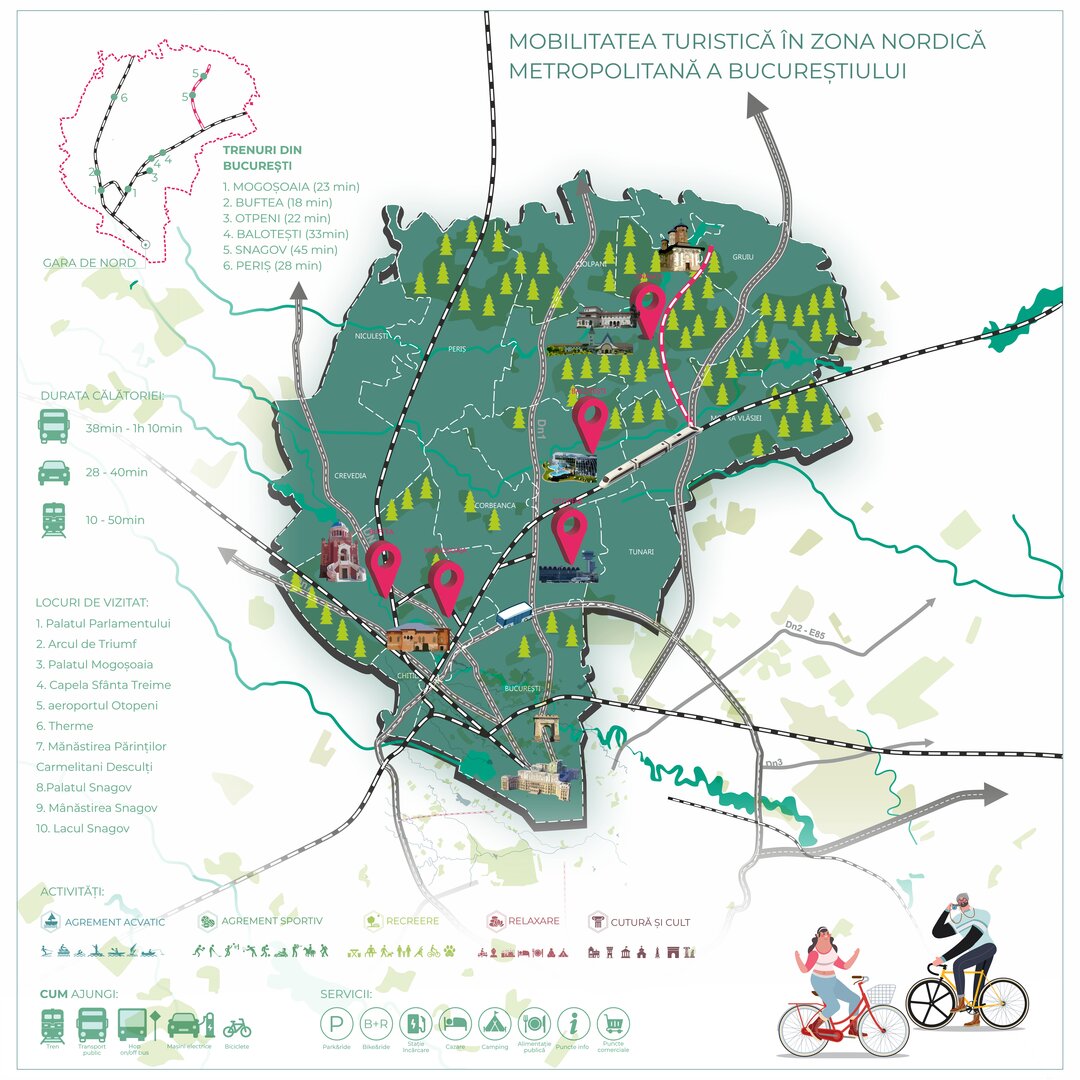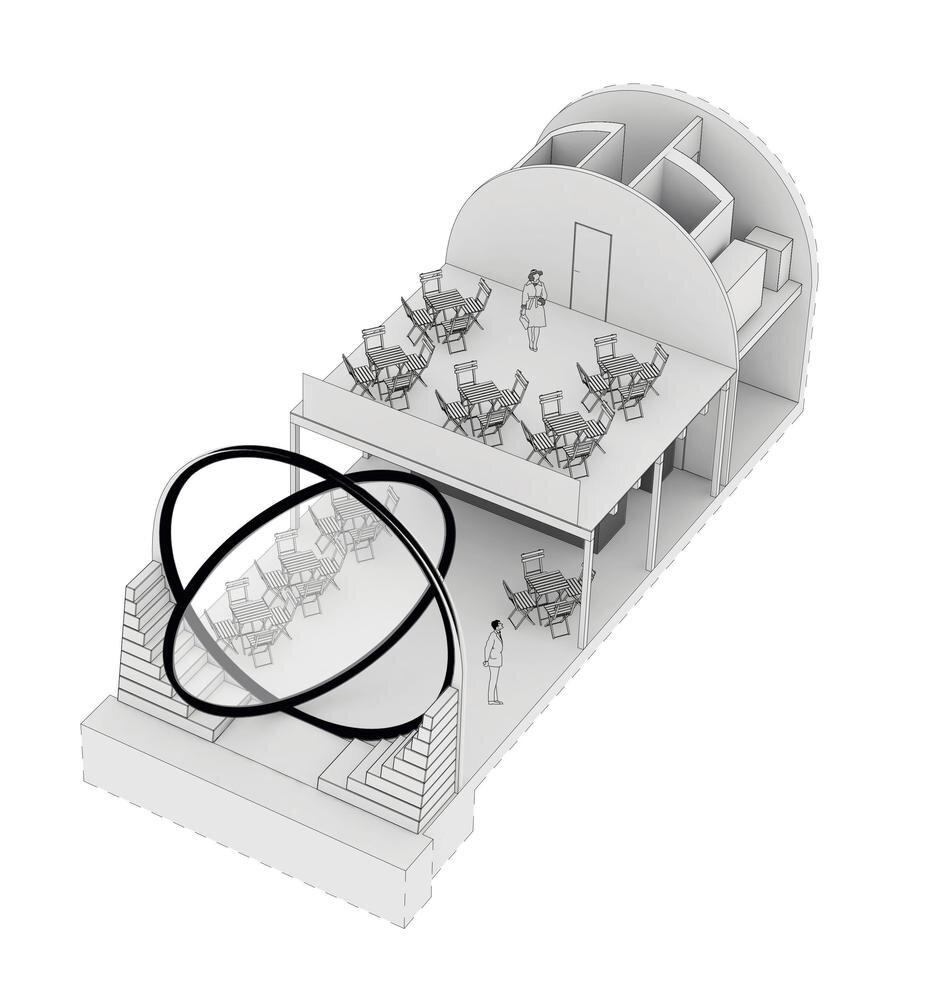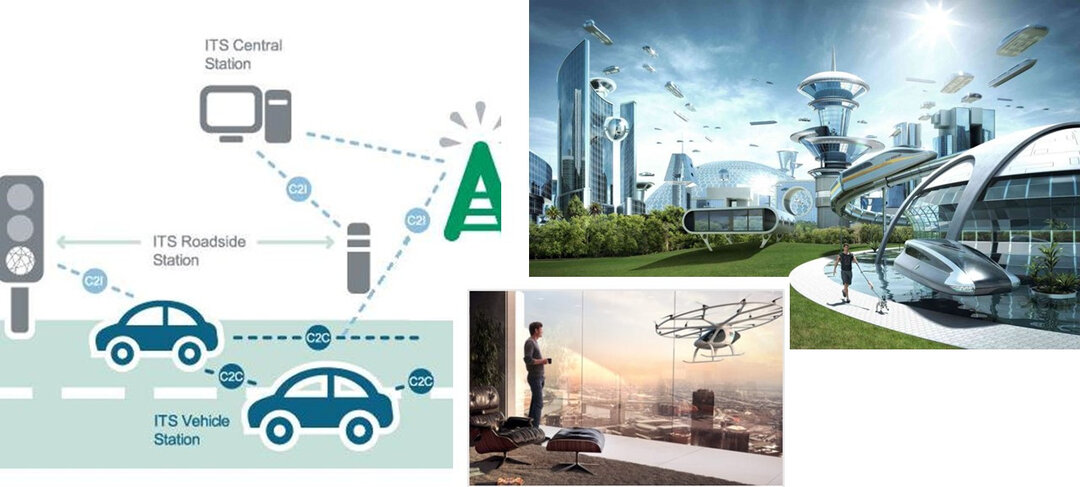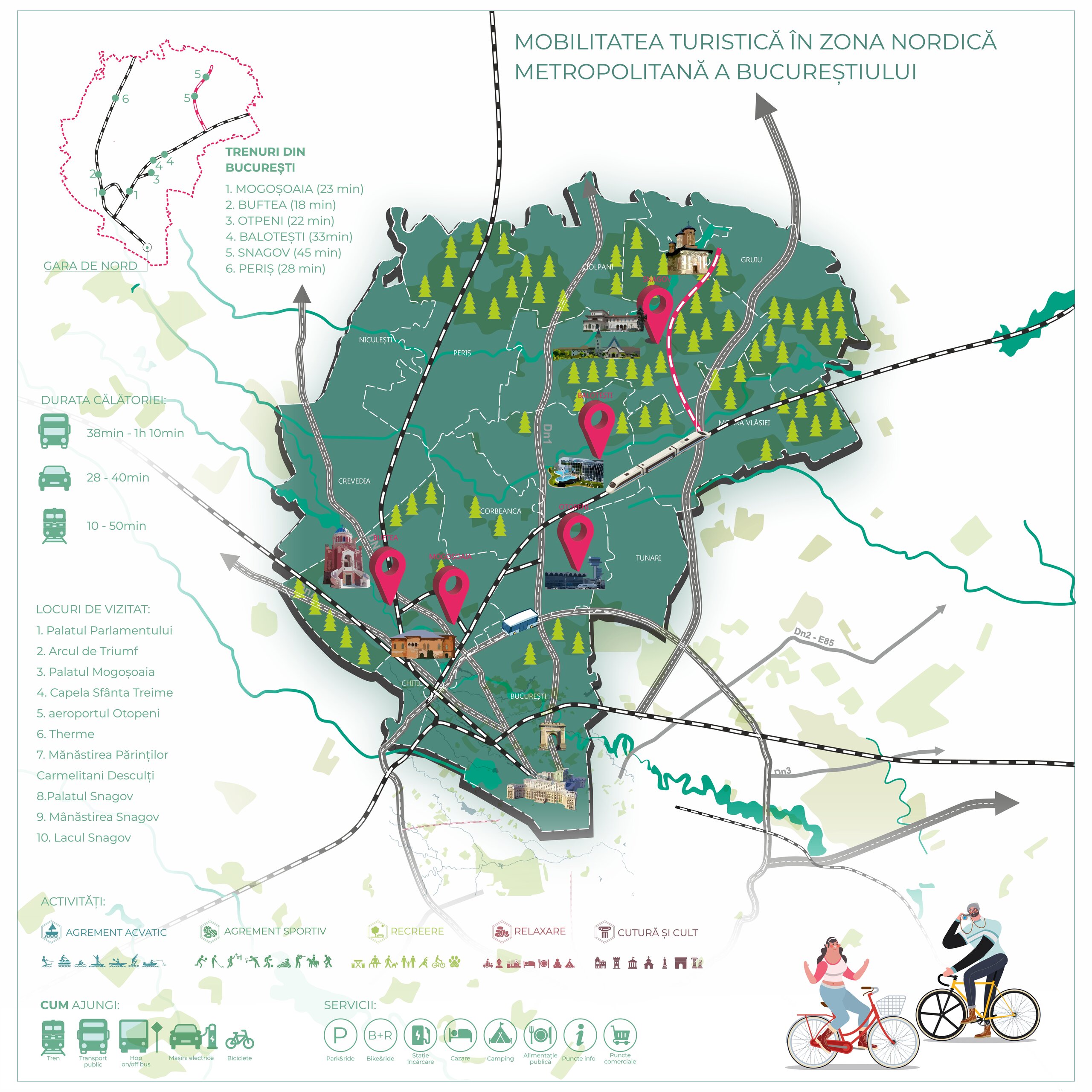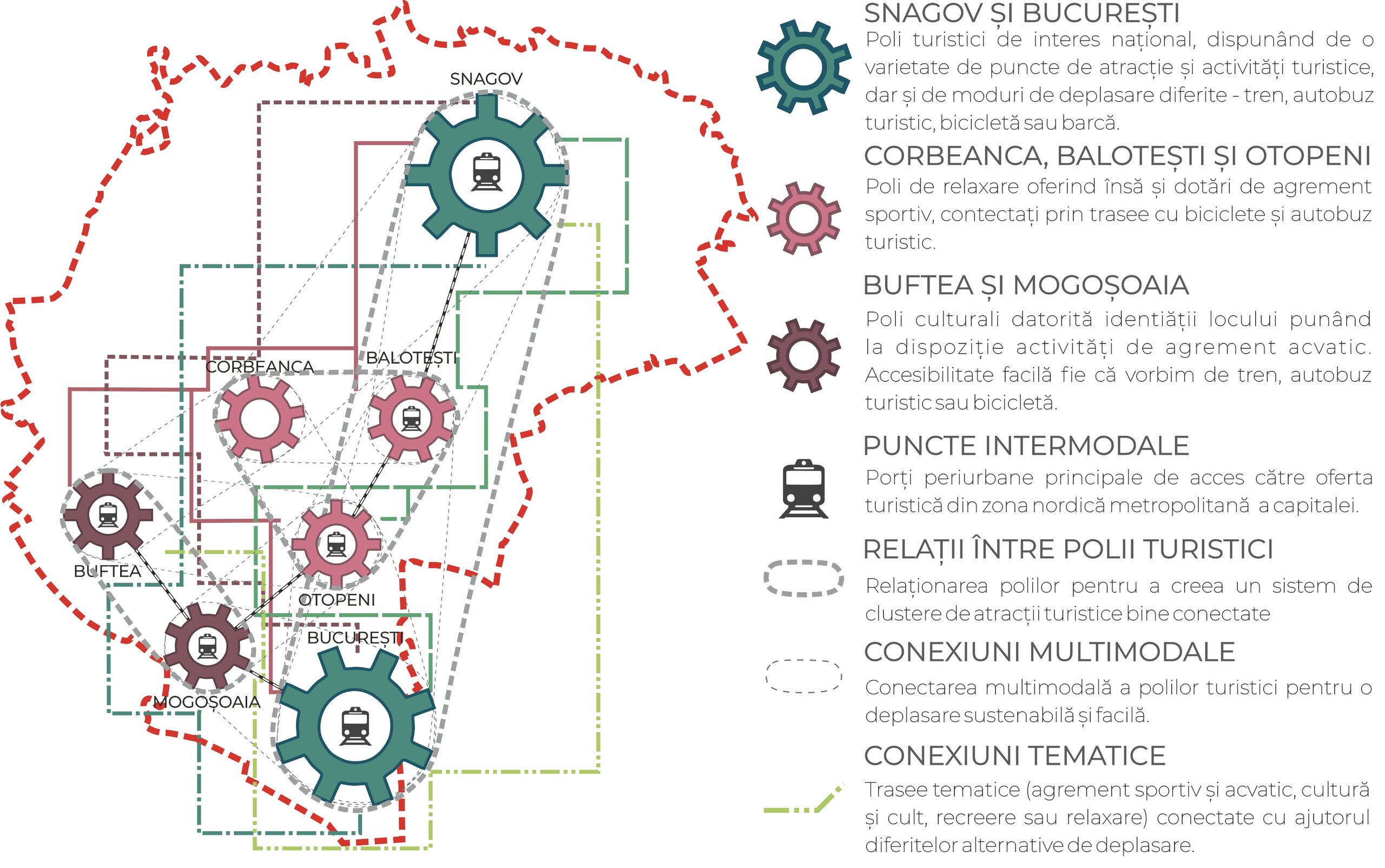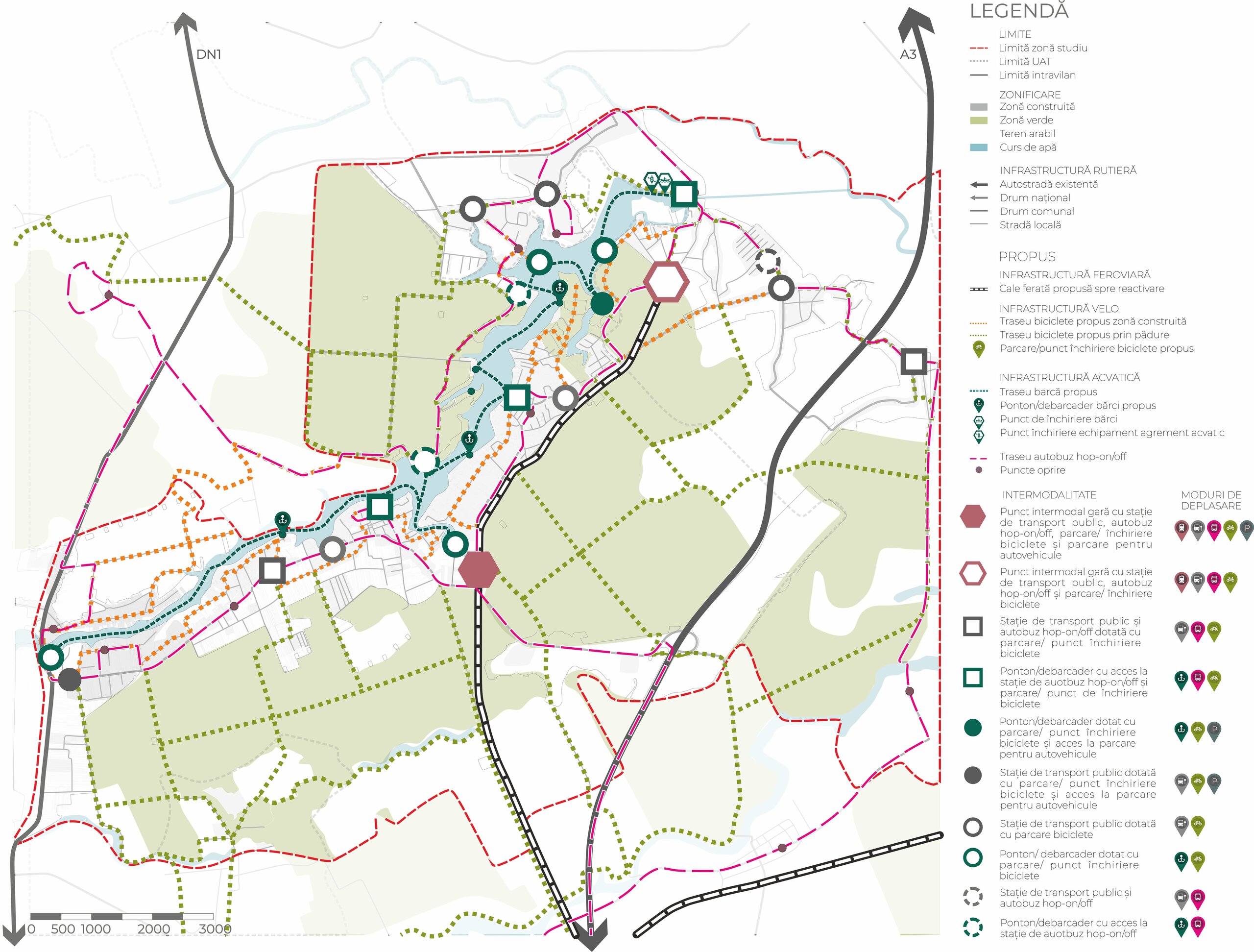
Tourist mobility
Author: drd. urb. peis. Maria-Alexandra IVĂNESCU
Supervisor: prof. dr. dr. arh. Mihaela Hermina NEGULESCU
Faculty of Urbanism, University of Architecture and Urbanism "Ion Mincu", Bucharest - 2024
Urbanization is a rapidly growing process, with the urban resident population currently exceeding 75% of the total population in Europe and 57% globally1. This process brings with it the need to travel (from peripheral/peri-urban areas to the main cities and vice versa), the cause being the continuous and uncontrolled expansion of the functional urban area, also known as urbansprawl2 - thus increasing mobility, especially by private vehicles.
Mobility is the system of movement in the territory, resulting from a (patternable) travel behavior that satisfies travel needs/demands, through choices within physical-spatial and transport, economic andsocio-cultural physical and transport offers (Negulescu, 2011).
In the field of urban mobility, the aim is to reverse the ratio between polluting motorized trips (mainly personal vehicles) and (more) sustainable and non-motorized ones (public transport, bicycles, scooters, etc.), in order to make the functional urban area more pedestrian-friendly. This seeks to reduce environmental impacts by changing travel behavior, but also by reorganizing the modal structure of movement - shifting from the personal car to other more sustainable means of travel.
Tourism, particularly in Romania, is an underdeveloped and undervalued sector, which is also reflected in the limited range of services offered for this type of occasional activity. Over time, however, an increase in the number of visitors has been noted in the structure of trips, with demand for tourism services thus on the increase according to INS statistics in recent years. There has thus been an increase in the number of tourists, but also an increase in the number of cars due to the lack of diversified tourist services. Thus, a predominant percentage of trips to and from tourist attractions are made by private vehicle. We can thus say that tourist mobility has the potential to become a component part of the tourism offer. A complete tourist offer provides, in addition to a package of tourist services (accommodation, access to different tourist attractions, discounts on different activities and products, etc.), a range of modes of travel to meet the needs of visitors, such as public rail or road transport, tourist buses/coaches, bicycles, river transport or any other special mode of transport (cable cars, chairlifts, funiculars, etc.)
At European Union level, tourism represents an important source of income in terms of GDP contribution, with a percentage of about 10% (according to the European Court of Auditors, based on the Economic Impact Reports 2021), although in the case of Romania, this percentage is significantly below the European average, with a percentage of around 6% (below countries such as the Czech Republic, Finland or Hungary). This phenomenon is felt not only in Bucharest, but also in its area of influence, with existing tourism resources being undervalued and underutilized to stimulate the local economy. Attracting visitors and increasing the tourist offer can be achieved by capitalizing on and promoting existing tourism resources. In this way, tourist attractions gradually become more accessible and popular, leading in advance to an increase in the attractiveness of the area and the city (not only in terms of tourism).
Tourist mobility refers to the mode(s) of travel used by visitors to get from their origin to different destinations (points of attraction) and vice versa. Accessibility by a variety of means of transportation is a factor that can play an important role in the choice of a tourist destination. Thus, a comprehensive and varied tourist offer helps to promote tourist areas to make them popular with visitors.
At both European and national level, tourism mobility is a significant factor in meeting sustainability and climate resilience objectives. Concerns about climate change and how to mitigate this global phenomenon have led to the inclusion of tourism mobility among the 17 sustainability objectives - the Sustainable Development Goals. The overarching goal most prominently referred to is number 11, Sustainable Cities and Communities. In the context of this agenda, tourist mobility is perfectly aligned with these priorities as it promotes eco-tourism through the use of environmentally friendly means of transport, alternative transport and available ridesharing options. The implementation of similar measures helps to reduce the carbon footprint of tourists and at the same time contributes to the development of sustainable urban infrastructure.
The timeliness and topicality of the topic at European level is given by the current European and global concerns about climate change and how this global phenomenon can be mitigated. The study on tourist mobility is also reflected in other strategies such as Climate Resilience, Sustainable Tourism, the European Green Pact, the European Sustainable and Intelligent Mobility Strategy or the EU Urban Agenda.
Tourism mobility in romania
In Romania, the importance of tourism mobility is highlighted by the need to align with European (environmental and sustainability) standards and objectives. The adoption of European strategies for sustainable mobility brings multiple benefits, including improved air quality and reduced pollution in major tourist cities such as Bucharest, Cluj-Napoca or Brasov. Sustainable tourist mobility can also attract more responsible tourists who prefer destinations that promote ecotourism and respect for the environment.
Tourism mobility has evolved over time as a leisure necessity. Like any phenomenon that evolves spontaneously and unplanned, tourist mobility brings challenges such as increasing car ownership (leading to pollution and traffic congestion) and dependence on the personal vehicle (leading to spontaneous parking and accessibility problems). Thus, points of interest become more difficult to reach due to the lack of transportation alternatives. In addition, the limited or inadequate existing infrastructure contributes to congestion and traffic jams. An example of this is the Prahova Valley, an area of high tourist interest, but which is constantly experiencing traffic problems and congestion for very long periods of time. Factors influencing this dynamic include high traffic volumes during peak periods, numerous intersections and access points in the localities, the lack of viable transport alternatives or inadequate parking. All these factors contribute to traffic congestion, negatively affecting the tourist experience and travel time. The current lack of planning for this type of mobility, tourist mobility as an integrated part of tourism, also brings with it a major development potential in terms of creating a travel model that can be implemented at different territorial scales and contextualized according to local needs.
The tourism mobility paradigm in romania
The mobility paradigm in Romania is still one in transformation, this is reflected in the current concerns focusing on sustainable development, digitalization, innovation and infrastructure improvement. At the national level, tourism mobility is a topic that receives little attention in Tourism Development Strategies at the regional or local level, in the National Strategy for Tourism Development and in Sustainable Urban Mobility Plans, despite the fact that tourism trips increased by over 90% between 2011 and 2019 (according to INS statistics). There is an increase in the number of foreign visitors from 6.7 million in 2021 to 14.7 million in 2023 (according to the Statistical Brief 2021-2023 from INS). Moreover, the ratio between domestic and international tourism at national level is now approaching equality, compared to 2019, when domestic tourism was predominant, accounting for about 80% of total tourism in Romania.
Many of the major cities, nationwide, are investing in expanding and modernizing their public transport networks and promoting the use of buses/ trolleybuses, trams or metro (in the case of Bucharest). At the same time, there is a growing interest in alternative mobility solutions, such as electric bicycles and scooters, supported by the development of dedicated lane infrastructure to ensure safe travel for all road users.
Challenges and future prospects
Although Romania has made significant progress in developing tourism, there are still challenges that need to be addressed and improved. Road infrastructure in some rural areas needs improvement and tourism services need to constantly adapt to modern visitor requirements. Investments in international promotion and staff training are essential to sustain the long-term growth of the tourism industry.
One of the main problems facing Romanian tourism is poor road and rail infrastructure. National roads and highways are insufficient and often in poor condition (according to a 2023 European Commission report), the number of kilometers of highway per capita in Romania is one of the lowest in the European Union. The rail network also needs significant modernization to bring it up to current standards, and existing trains are often slow and arrive late. These shortcomings make it difficult and tiring for visitors to travel between different tourist attractions.
As regards public transport, although available in most major cities, it is underdeveloped in rural and mountainous areas, which are an important part of Romania's tourist attractions. Both the lack of direct connections and the lack of reliable transport services limit tourists' access to many of the points of interest. In most cases, the only accessible means of transportation is the private car. Moreover, air traffic is no exception either, regional airports are few and often not efficiently connected to the rest of the country, but especially to tourist areas.
In spite of all the significant challenges hindering the full realization of its tourism potential, Romania has considerable opportunities to improve its tourism mobility at its current early stage of development. Urban mobility planning at different territorial levels (local, regional and national), including tourism mobility, can, among other things, also increase the attractiveness of tourism in the areas of interest. Infrastructure investments and projects to modernize roads and extend the motorway network, as well as the rehabilitation of railways, could also significantly transform the tourist experience. In addition, the development of efficient public transport services and the expansion of domestic air links could make it easier for tourists to access all regions of the country.
Another key issue is also the digitalization of tourism services. An integrated platform providing detailed information on routes, means of transportation and tourist attractions, as well as the possibility to book tickets and accommodation online, could significantly improve tourists' mobility and experience. Furthermore, the creation of comprehensive tourist packages including tourist mobility would make points of interest much more attractive and increase the tourist offer in the area. Initiatives to promote green tourism and implement sustainable practices in the management of tourist destinations are also necessary to preserve and capitalize on Romania's existing natural resources.
Case studies
Proposed trails Bucharest metropolitan area
The study on tourist mobility started with the dissertation paper in which I first approached this topic and thus discovered the complexity and importance of the subject from an urbanism/planning and mobility perspective. It was surprising to discover the limited amount of information available (especially in Romanian) at that time that referred to the topic of tourism mobility. This was also one of the main reasons that challenged me to continue my research and to want to contribute to the further development of the topic.
The paper analyzed the mobility and tourist offer in the metropolitan area3 of Bucharest, with a more detailed study on the northern area, an area with high tourist potential, but with a low travel offer. Different levels of urban planning and mobility were analyzed (tourist attractions, heritage, road and rail network, etc.), identifying a number of dysfunctions and potential problems. A vision was also created and development strategies and principles were established, leading further to the proposal stage. Paths were planned at different territorial levels - metropolitan, local and zonal, thus providing an integrated planning and perspectives for future development.
At the metropolitan level it has been proposed to develop thematic poles that will be connected by bicycle routes, hop-on/off tourist bus or train. Similarly, at the local level, tourist mobility has been improved by expanding the number of metropolitan public transport stops, the provision of transfer parking facilities for both cars and bicycles (Park&Ride, Bike&Ride), bicycle rental points and bike rental points/boat docks. Furthermore, it is proposed to reactivate the railway and (re)develop the two stations - the existing one and a proposed new station - by creating bicycle, boating and hop-on/off tourist bus routes.
At the zonal level, the development concept aims to resuscitate Snagov through the development of the two train stations - Snagov train station and the proposed new train station - connected and made accessible by the different means of transport proposed (bicycle, hop on/off bus, boats), but also by their specificity as important cultural poles.
The old railway station will be redeveloped with a beekeeping theme, with small accommodation units and pavilions being developed nearby. Various workshops on collecting and processing honey, making candles from natural wax or cooking with locally produced bee products will be organized here. There will also be relaxation and recovery services such as aromatherapy, honey massage or royal jelly treatments. In addition to rail access, the station will also have local and tourist bus stops, bike rental and parking and info points.
The newly proposed station will be set up as an intermodal point offering access to means of transport such as tourist bus, metro bus and bicycle rental, as well as park&ride, bike&ride and electric car charging stations. The station will be set up as an intermodal point providing access to means of transport such as tourist bus, metro bus and bicycle rental, as well as park&ride, bike&ride and electric car charging stations.
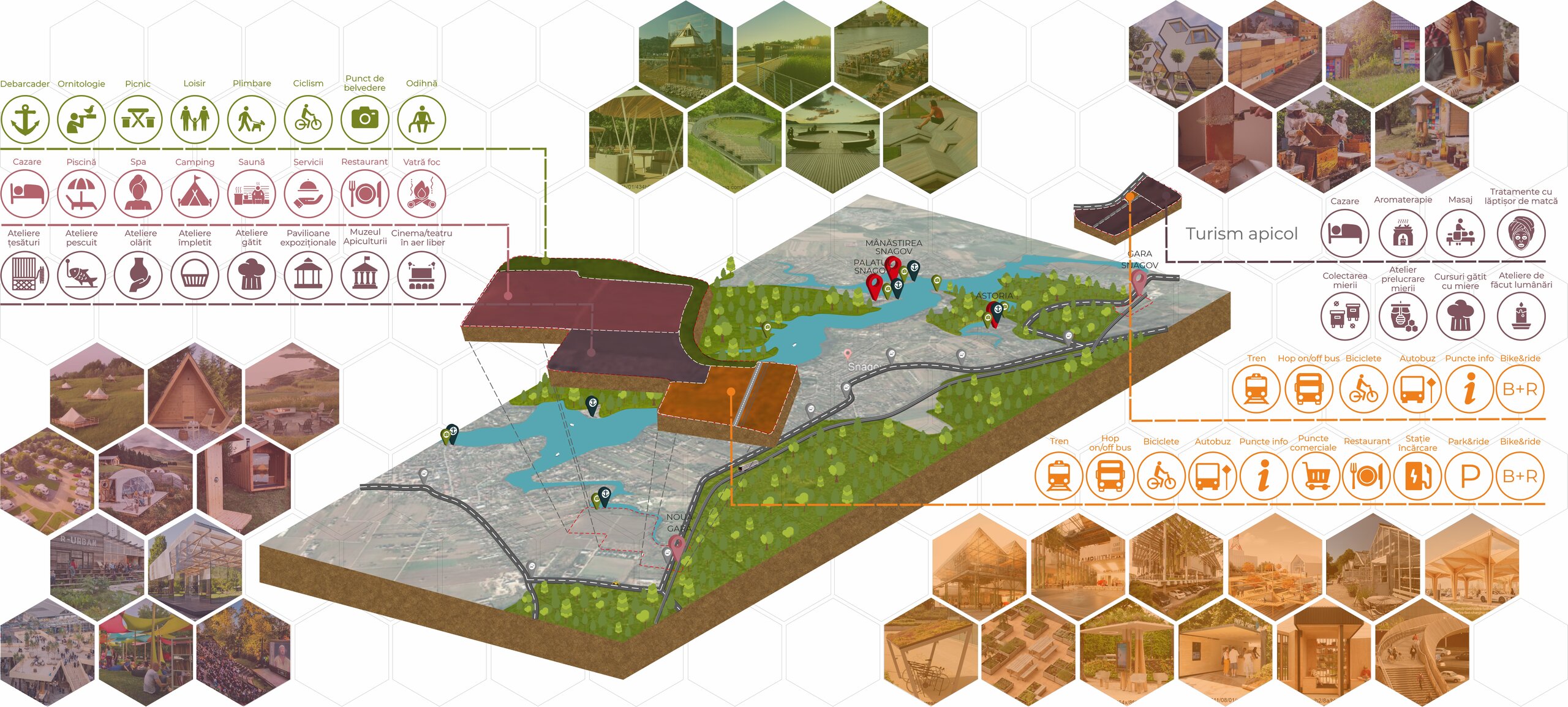
© Maria-Alexandra Ivănescu
Study Brasov and metropolitan area
This doctoral dissertation aims to continue the study initiated in the dissertation, following the same thematic, tourist mobility. The aim is to explore the subject in even more detail, but this time focusing on the metropolitan area of Brasov and the nearby areas with a high potential for tourism. The stage of the research is still at an early stage and will be further developed in order to reach relevant conclusions based on a detailed analysis of the tourism mobility offer in the area. Similar to the previous study, proposals and recommendations will be made based on examples of international best practice. These will address existing dysfunctions and challenges in terms of tourism mobility, sustainable tourism development and tourism offer in the area of interest.
Good practice examples
Barcelona
An example of a relevant city with well-developed tourist mobility is Barcelona; a destination that I had the opportunity to study for two months, on the one hand as a temporary resident and on the other hand as a tourist in Barcelona.
Barcelona is one of the most popular tourist destinations in Europe, attracting millions of visitors every year thanks to its varied offer of cultural and architectural attractions, as well as the unique experiences on offer (culinary, cultural, etc.). Tourist mobility in the city is well supported by a diversified and efficient infrastructure, which allows tourists to easily explore the city's many attractions. The existing urban mobility system is well developed, which is noticeable upon arrival at the city's major urban gateways, be it the airport or train and bus stations. The mobility offer is very varied, providing local public transport, alternative and shared transport, as well as special transport.
Public transport in Barcelona is very well organized, with an extensive network of metros, buses, trams and regional trains. The metro is probably the fastest and most efficient way to get to the main tourist attractions. Buses complement this network, offering routes that cover the entire city and outlying areas. As for trams, although coverage is more limited compared to other means of public transport, they offer a pleasant way to travel, especially in the newly-developed areas of the city. For visitors who prefer alternative transportation, Barcelona offers many options for renting bicycles, scooters or electric scooters. The public bicycle rental system is also very popular with locals and tourists alike, offering an affordable and sustainable way to get around while helping to reduce traffic and pollution. The city has a dedicated bicycle infrastructure that facilitates exploration in an eco-friendly way.
For visitors who prefer convenience, there are numerous taxi options and ridesharing services (Uber and Cabify). These are easily accessible and offer a comfortable way to get to your destination, especially during late hours or for transfers to and from the airport.
Another way for tourists to visit is by boat. Package tours offer day cruises, offering the opportunity to see the city and coast from a different perspective, combining relaxation with exploration.
As far as Barcelona's tourist mobility offer is concerned, it is diversified, offering different packages for tourists. Examples are the Barcelona City Pass or Barcelona Card, with passes from 1 to 7 days. The passes include access to tourist attractions, discounts on different services and products, local public transport, as well as access to special transportation, tourist buses or boats, to make the trip as easy as possible and the visitor's experience as pleasant as possible. Other packages also include guided tours using alternative means of transportation such as bicycles or segways.
Tourist buses, such as the Barcelona Bus Turístic, operate on the hop-on, hop-off principle, allowing visitors to get off at any stop to explore a particular area and then have the option to get back on the bus to continue the tour. The system is organized to provide an attractive and relaxing way to see the city's main sights, while providing audio information about the history and culture of the places visited.
Switzerland
Another outstanding example that I had the opportunity to experience is the urban and tourist mobility system in Switzerland. Studying the approach to tourist mobility in different areas of Switzerland, I noticed the existence of nationwide planning for non-motorized tourist mobility. The planning of this national trail network was done in collaboration with the local authorities in each canton to ensure good coordination and networking.
Based on these trail networks, a digital platform providing interactive maps of trails in Switzerland and Liechtenstein called SwitzerlandMobility has been developed . It offers a choice of different summer trails such as hiking, cycling, mountain biking, skating and canoeing, as well as winter activities and trails, winter hiking, trails with special equipment (snowshoeing, cross-country skiing) and ski slopes. The planned trails are connected with a variety of services such as accommodation, bike or sports equipment rental points, but also have access to regional trails. Furthermore, online information and guidance services are offered along the trails. This is intended to provide a complete experience throughout the entire journey.
The proposed routes have been subdivided into several categories, at local, regional, national and international level. Each of the trails are signposted, with different colors according to the mode of travel for which it has been planned, for example: yellow signs for walking trails and red for non-motorized ones. These signs are supplemented by additional information such as the national, regional and local routes with which they are connected. In addition, the modes of travel on those trails are marked by different colors: green for hiking, light blue for cycling, ochre for mountain biking, purple for rolling, and turquoise for canoeing/kayaking. This color coding is correlated with the corresponding trails on all information boards and virtual maps.

In terms of infrastructure, the national and regional network of trails is divided into distances that can be covered in a day, whether by train, bus, boat or cable car, which can also be used for planning short trips. All this information can be found on the online platform, with all timetables and routes available on an interactive map. There is also a printed option, in the form of maps marking the routes for each mode of travel.
SwissTrails offers packages of tourist services to make it easier for visitors to get around, whether it's accommodation, train or bus tickets, luggage transfer, bike rental (electric, tandem, mountain) and equipment, or guidance and information via brochures or online. In terms of accommodation, all tourist accommodation establishments (hotels, campsites, private rooms, hostels or farms) provide bicycle parking facilities, equipment for small repairs and washing and drying facilities for clothes and equipment.
Similar to Barcelona, Switzerland has a Swiss All-in-One Travel Pass, which offers nationwide tourist mobility. Through passes with a validity of 3 to 15 days, a combined mobility is made available, optimally integrating public transport and alternative means of transport, offering ideal conditions for leisure and tourism. A variety of modes of public transport with unlimited access - trains, buses, boats, panoramic trains, express trains - and tourist services such as free entrance to museums, mountain excursions and discounts on the purchase of other mountain excursions are provided.
Conclusions
Although Romania is currently facing numerous and complex challenges in terms of mobility, and especially tourist mobility, the opportunities for improving infrastructure and services are considerable. Integrated strategic planning and appropriate investments can reverse the balance and transform Romania into a competitive tourist destination at European level, making full use of its cultural, natural and man-made resources. Also, integrating tourism mobility into the tourism services on offer is an essential step to increase tourist attractiveness, but also to facilitate travel and ensure a pleasant experience for visitors. A collaboration between different types of urban stakeholders and tourism (and other) authorities is necessary to overcome current obstacles and create a favorable environment for the development of quality tourism with a diversified offer.
Bibliography
Negulescu M. H. (2011), Mobility and urban form - theoretical aspects, Ed. Universitară "Ion Mincu", Bucharest.
Notes
1 Share of urban population worldwide in 2023, by continent. Available at https://www.statista.com/statistics/270860/urbanization-by-continent/.
2 The development of urban residential areas, commercial areas and the expansion of the street system without regard to urban planning.
3 Includes the administrative territory of the polarizing core city and the administrative-territorial units within its catchment area up to 30 km away, which meets the condition of spatial contiguity and within which cooperation has developed on multiple levels.

